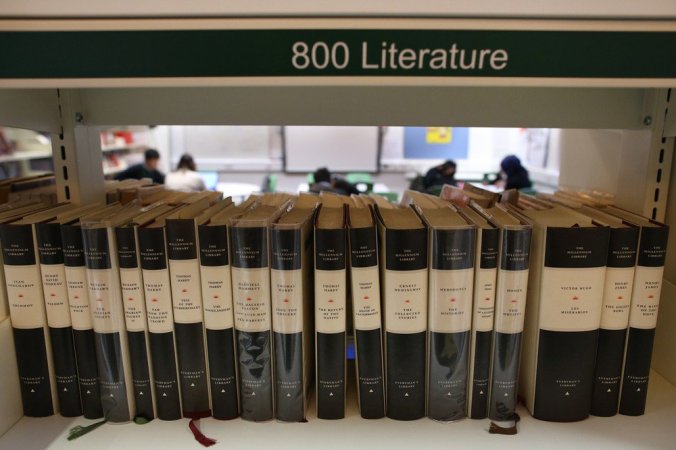 Bookmarks as Tombstones | Read It Forward
Bookmarks as Tombstones | Read It Forward
These are the tombstones of unfinished books. These are the grave markers of difficulty, of impatience, of lack of discipline, of inadequate intelligence, of failure. These are the headstones of my over-arching ambition, my foolish completism, my false idea of myself. Books are the great love of my life, and these are the ones even that great love couldn’t reach. These are rich, rewarding texts that only ask a few days from me, and these are the ones I couldn’t even give that to.
Month: January 2016
 This Should Be Written in the Present Tense by Helle Helle | New York Times Book Review
This Should Be Written in the Present Tense by Helle Helle | New York Times Book Review
I’M IN THE FUCKING NEW YORK TIMES BOOK REVIEW!!! I CAN’T BELIEVE MY LIFE!!
“For the last 20 years, Helle Helle’s novels and short stories have made her a star in her native Denmark, where she regularly receives awards and acclaim. Denmark is also where, according to her biography, Helle “lives in a forest.” What a fittingly magical dwelling for Helle, who — judging from her first novel to be translated into English, “This Should Be Written in the Present Tense” — has enchanting gifts as a storyteller.” (More.)
 The Classic Fiction Formula | The New Republic
The Classic Fiction Formula | The New Republic
My first piece for The New Republic! I’m so thrilled!!
As I write this, I can spot on my shelves the following books: On Writing, Zen in the Art of the Writing, The Art of Fiction, The Art of the Novel, Aspects of the Novel, 13 Ways of Looking at the Novel, This Year You Write Your Novel, Reading Like a Writer, and How Fiction Works. And I’ve read every damn one of them. Though some were revelatory—especially the first, by Stephen King, and the last, by James Wood—most of them failed to improve my writing, though they sure as hell improved my reading, and some left me discouraged and overwhelmed. Novelists and critics wrote these books, practitioners of the art, who, it mostly turns out, are terrifically adept at elucidating narrative strategies but less skilled at demonstrating how to put those techniques into practice. And often you’re left not with literary ability but a sense of awe at just how great the great writers are.
 Numero Zero by Umberto Eco | Northwest Review
Numero Zero by Umberto Eco | Northwest Review
As an academic, Eco had been publishing scholarly work since the late ’50s, and it was his studies in medieval aesthetics and semiotics that led him to write The Name of the Rose. In fact, it has informed all of his fictions, as they all tend to resemble, in some way, a scholar’s mystery. The prologue of The Name of the Rose, titled “Naturally, a Manuscript,” begins with the discovery of a journal of which the rest of the novel consists, thereby elevating the first-person narration to documentary verisimilitude. In The Mysterious Flame of Queen Loana, the protagonist is a bookseller who loses all his memories with the exception of every book he’s ever read—he must reconstruct his identity through literature, which is about as good a metaphor for the life of a scholar as you’re going to get. (More.)
 The Failed Mechanics of Masculinity:
The Failed Mechanics of Masculinity:
On B.H. Fairchild’s The Blue Buick |
The Millions
The ostensible occasion for this review is the paperback release of B.H. Fairchild’s The Blue Buick: New and Selected Poems, a compendium of 30 years of work, but the real reason is that I was simply moved to write about this book and moreover this poet, this B.H. Fairchild, whose name had previously existed in my peripheral vision but who became for three days of rapid but somehow still assiduous reading the only portal through which I viewed the world, as rivet by rivet the machinery of Fairchild’s frank verse contorted me through its circuitous veins–Pardon my lousy lyricism there. It’s just that after reading The Blue Buick in large gulps, Fairchild — not his style so much as his spirit — wore off on me. He’s one of those writers whose rhythm you fade into, smoothly, and when you emerge, the undulations still pulse in you, and it’s hard not to mimic the mechanics.
O Muse, Where is Wisława Szymborska’s Teeming Crowd? | Literary Hub
Last year saw the publication of Map: Collected and Last Poems, an extraordinary and vital summation of Szymborska’s decidedly modest output, and although critics positively and even sometimes excitedly reviewed it, the book didn’t sell tremendously well (and of course nothing like the 120,000 first edition of View with a Grain of Sand) and wasn’t noted in all those Best of 2015 lists. What a shame. Not only is Szymborska a major poet of the last half century but Map, as a reading experience, is wonderful, illuminating and enriching, a reminder that poetry can be direct, unadorned and still deeply moving. I cannot complain, of course, that Szymborska’s work is hopelessly obscure (because it isn’t) but I can be a tad disappointed that such a rare poet and such a brilliant, warm, and lovely book didn’t find more readers in 2015.
 Interview at 0s&1s Reads!
Interview at 0s&1s Reads!
Check out my interview in 0s&1s Reads! It’s my first interview as a writer and critic, and I couldn’t be any more stoked about joining some of my favorite writers in “The Art of Commerce” interview series. Here’s to 2016!

My 2016 Literary Resolutions | Literary Hub
In 2016, I vow to read more books.
And in 2016 I vow to not only read more books but also make deliberate choices about what I read.
In 2016 I vow to keep learning from Rebecca Solnit and Ta-Nahisi Coates and Kiese Laymon and Jenny Zhang and Saeed Jones and April Ranger and Porochista Khakpour and Madeleine Holden and Ashley Ford and Alana Massey and Roxane Gay and Rachel Syme and Helen Vendler—even though I can never fully learn their lessons, I vow to keep listening, until I get as close to understanding as possible.
I vow to seek out new, as-yet-unheralded writers—women, writers of color, trans writers, writers in translation—and promote as many as possible. But I vow not to do this because I think they need my help, but because I need theirs. (More…)
